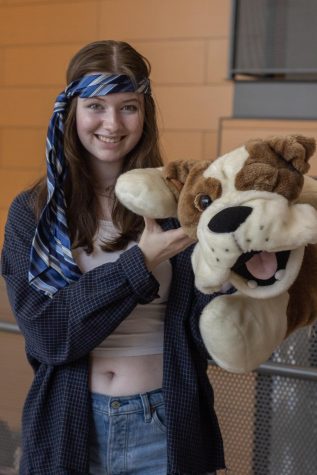Disney GRSM representation is still lacking
October 12, 2020
Note: I use the term GRSM (Gender, Romantic, and Sexual Minorities) as an alternative to the acronym LGBT+, as it encompasses all non-cisgender, non-heterosexual, and non-allosexual people.
One of my favorite endings to a series is the 2014 finale of “The Legend of Korra.” In the beautifully animated and perfectly scored final scene, the titular character takes the hand of her female friend, widely interpreted as a romantic gesture. The creators stated they knew the show—aired on Nickelodeon—wouldn’t be allowed to portray a same-sex relationship, but they, as well as the subsequent spin-off comics, confirmed that the two characters were romantically involved.
For a while, it appeared to be the most we would get in terms of GRSM representation in children’s media. But gradually, it began to seem like media giants were willing to start taking steps toward representation. Netflix has been particularly notable for releasing several animated shows targeted towards children (many have a strong adult/teen fandom following as well) featuring openly GRSM characters. Several of these characters also happen to be people of color—lack of racial diversity is another continuing problem concerning GRSM characters in film and television.
But Disney still lags behind. In “Avengers: Endgame,” a male character describes a dinner he went to during a support group, referring to his date with ‘he/him’ pronouns. The character has approximately five lines, doesn’t appear for the rest of the movie, and has no bearing on the plot. He isn’t even named and is credited as “Grieving Man.” Yet Marvel and the directors tweeted out messages about the importance of representation, treating this one scene as a milestone for gay rights rather than a feeble attempt to appear diverse.
Quite honestly, there hasn’t been much progress in terms of Disney movies. “Onward,” Pixar’s latest film, made headlines after a female character casually mentions that “[her] girlfriend’s daughter got [her] pulling [her] hair out.” The character, voiced by Lena Waithe, who is openly lesbian, barely appears for the rest of the film, and there’s no other reference to her sexual orientation.
It seems like Disney is only willing to commit to the bare minimum of representation: a barely visible lesbian couple in the background, two men dancing together, a refusal to deny but not fully confirm Elsa’s sexual orientation in “Frozen,” which was interpreted by some as a metaphor for coming out.
Compare this to Netflix children’s shows such as “She-Ra,” which features an openly non-binary character and several gay couples, or “Kipo and the Age of Wonderbeasts,” where a main character casually mentions that he’s gay and goes on to have a romance with another male character. Portraying an openly gay and black teenager with a fleshed out personality and character arcs, who doesn’t conform to stereotypes, humanizes queerness and breaks down stereotypes.
But why, exactly, is this important?
GRSM children and teenagers often deal with shame or fear surrounding their orientation or gender identity. GRSM teenagers are five times more likely to have attempted suicide than their heterosexual peers; abuse or harassment based on sexual orientation or gender identity more than doubles the likelihood that a teen will self-harm.
Seeing characters who don’t conform to the hetero/cisnormative society that is frequently represented in the media teaches children that it’s okay not to be heterosexual, allosexual, or cisgender. Even among those who are straight and cisgender, including GRSM characters allows them to understand that some people are different, paving the way to a more accepting and tolerant future.
There’s still progress to be made. Gender-nonconforming, bi/pan, asexual/aromantic, and transgender characters are almost non-existant in television and film aimed towards children or adults. Yet, by including well-developed characters who just happen to be GRSM in much of their children’s media, Netflix has demonstrated that they are actually willing to commit to inclusion.
So, if Disney wants to create a reputation as a teller of diverse, realistic stories through their movies, they need to commit to including GRSM characters with fully developed personalities that don’t feel like publicity stunts.
Maybe, someday, a woman mentioning she has a girlfriend in a Disney movie won’t be a news-worthy event.



